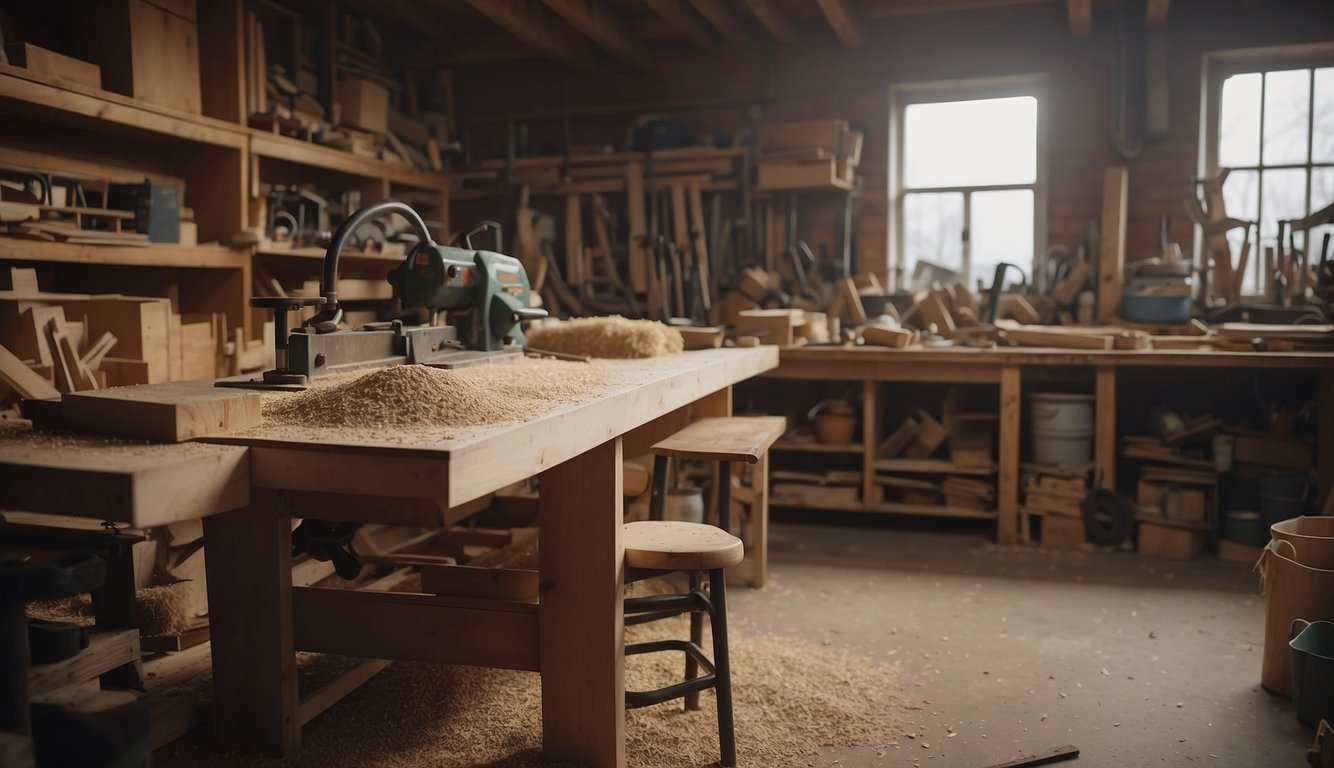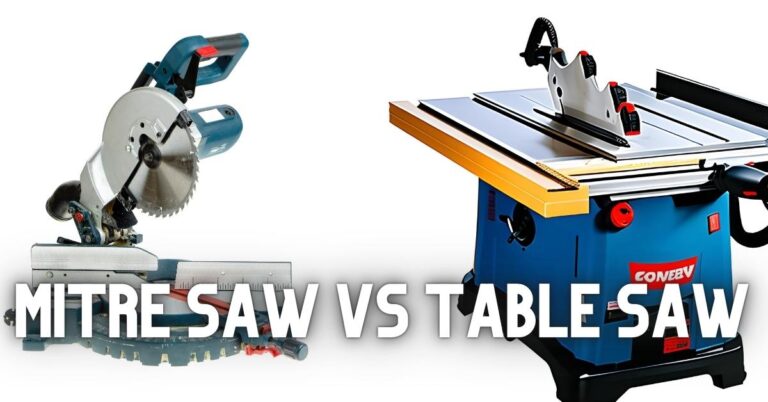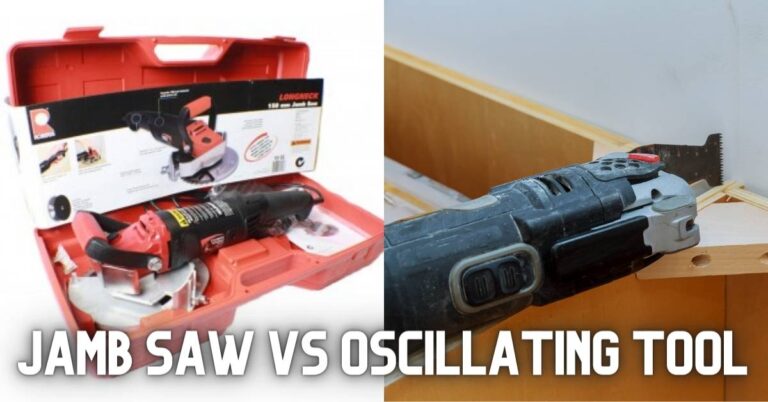Barrel Grip vs D Handle Jigsaw: Which One Reigns Supreme?
Choosing between a barrel grip and a D-handle jigsaw can significantly impact your woodworking projects. The barrel grip jigsaw generally offers greater control and precision, especially for detailed work. Meanwhile, the D-handle jigsaw is designed for comfort and ease of use, making it suitable for longer cutting sessions.
Each type has its advantages that cater to different preferences and tasks. The D-handle’s top-mounted grip allows straightforward maneuverability, while the barrel grip’s low centre of gravity provides superior stability. Understanding these differences can help you select the right tool for your needs.
Your decision will be guided by whether you prioritize precision or comfort. The barrel grip might be your best bet if intricate cuts are your primary focus. On the other hand, if you need something more accessible to handle for extended periods, the D-handle could be more appropriate.
Key Takeaways
- Barrel grip jigsaws offer better control and precision.
- D-handle jigsaws are more comfortable for prolonged use.
- The choice depends on whether you value precision or comfort more.
Understanding Jigsaws
Jigsaws are versatile power tools commonly used in woodworking, metalworking, and other crafting applications. They are designed to make precise cuts in various materials using a reciprocating blade.
Jigsaw Basics
A jigsaw is a power tool that uses a rapid up-and-down motion of a thin blade to cut through various materials. Their effectiveness lies in their ability to perform straight and intricate curved cuts.
The tool is handheld, allowing for greater flexibility and control. Users can easily guide the jigsaw along lines and patterns, making it a must-have for any woodworking project that requires precision.
Types of Jigsaws
There are two primary types of jigsaws: barrel grip and D-handle. Barrel grip jigsaws offer a lower centre of gravity, providing enhanced control for detailed cuts. The user holds it by the barrel, which can reduce hand fatigue during extended use.
D-handle jigsaws come with a top handle with a “D,” making them easier to grip for many. Beginners prefer this type due to its ergonomic design and ease of use. Both types have their unique advantages, depending on the user’s needs.
Key Jigsaw Features
When selecting a jigsaw, consider features such as variable speed control, which allows you to adjust the cutting speed according to the material. Blade change systems are also crucial; quick-release mechanisms save time and effort when switching blades.
Orbital action settings can enhance cutting efficiency by adding a forward motion to the blade’s movement, making it easier to cut through thicker materials. Other features include dust blowers to keep the cutting line visible and LED lights for better visibility.
Proper selection of jigsaw blades is essential. Blades vary in tooth shape, size, and material, affecting their suitability for cutting wood, metal, or plastic.
D-Handle Jigsaws Explained
D-handle jigsaws, characterized by their top-mounted handle, offer a blend of ergonomic design and versatile performance. This section thoroughly explores their design, usage, advantages, and limitations.
Design and Ergonomics of D-Handle
The D-handle jigsaw features a top-handle design, making it easy to grip and control. The trigger is situated within the handle, allowing for one-handed operation. This design often includes rubber over molds for added comfort, reducing hand fatigue during prolonged use.
The ergonomics are particularly beneficial for tasks requiring steady control and precision. The handle’s shape fits most hands comfortably and effectively supports both push and pull motions.
Using a D-Handle Jigsaw
Operating a D-handle jigsaw involves activating the trigger with a single hand. This design offers better control when cutting from above, keeping the user’s hand above the blade. Adjustments to the cutting angle and speed can often be made without releasing the tool, improving overall efficiency.
Visibility is sometimes compromised due to the handle’s position, especially when making intricate cuts.
Advantages of D-Handle Jigsaws
D-handle jigsaws are praised for their ease of use and comfort. Their design allows for extended use without significant hand strain. The trigger placement facilitates smooth and continuous operation.
These jigsaws often have variable speed controls, enhancing their versatility. Their ergonomic design makes them suitable for many users, from beginners to professionals.
Limitations of D-Handle Jigsaws
Despite their benefits, D-handle jigsaws can suffer from reduced visibility of the cutting line, especially during intricate cuts.
Their design, while ergonomic, may not provide as much precision control as the barrel grip model. Some users may find the top-heavy design less stable when making detailed or angled cuts. Additionally, the size and shape of the handle may not suit all hand sizes equally.
Barrel Grip Jigsaws Explained
Barrel grip jigsaws are designed with a barrel-shaped handle, offering unique control and precision. They are favoured in applications where visibility and line of sight are critical.
Design and Ergonomics of Barrel Grip
Barrel grip jigsaws are recognized for their low-profile, cylindrical handle, which users grip on the machine’s body rather than on top. This design helps lower the centre of gravity, contributing to stability.
The ergonomic design allows for a comfortable wrist position. Rubberized grips often enhance comfort, reducing strain during extended use. Cordless models, offering increased mobility, are also available. The compact shape improves overall handling, even in tight spaces.
Using a Barrel Grip Jigsaw
Operating a barrel-grip jigsaw allows users greater control and precision during cutting. The hand position enables better maneuverability and smoother movement, and this setup also provides a closer line of sight to the cutting area.
Enhanced control results in accurate, clean cuts that are beneficial for detailed woodworking and intricate designs. Users usually notice better heat distribution, mitigating heat buildup on extended jobs. This can lead to improved tool longevity and reduced warp risks.
Advantages of Barrel Grip Jigsaws
Barrel-grip jigsaws offer several advantages. The lower centre of gravity increases stability and enhances cut precision. A better line of sight allows users to follow cut lines more accurately. The ergonomic grip improves comfort, reducing hand fatigue.
Using both hands enhances control, and cordless barrel grip options provide portability. Precision and visibility are key benefits, making these jigsaws ideal for detail-oriented tasks.
Limitations of Barrel Grip Jigsaws
Despite their advantages, barrel grip jigsaws have some limitations. The grip design may be less familiar to users accustomed to D-handle jigsaws, requiring an adjustment period. Control can be challenging in awkward positions or overhead work.
Heat buildup may still occur, though it can be managed with breaks. Barrel grip jigsaws also tend to be heavier, which might impact prolonged usage. Their price point can be higher due to their specialized design and features.
Comparing D-Handle and Barrel Grip Jigsaws
Choosing between D-handle and barrel grip jigsaws involves considerations of ergonomics, handling, visibility, precision, versatility, convenience, and performance.
Ergonomics and Handling
D-handle jigsaws offer a top-mounted handle, providing a comfortable grip for users who prefer a more traditional holding style. This handle often includes a trigger for easier control. Its shape suits those who work for long hours, reducing fatigue.
On the other hand, Barrel grip jigsaws require the user to hold the tool’s body directly. This closer grip can offer better control and maneuverability, especially for detailed cutting. Barrel grips may feel more natural for those familiar with handling saws in this fashion.
Visibility and Precision
When using a D-handle jigsaw, visibility may be slightly limited due to the handle positioning above the blade. The design can obscure the cutting line, requiring users to lean forward or adjust their position frequently to ensure accuracy.
With barrel grip jigsaws, the hand’s lower position enhances the user’s line of sight. This setup improves visibility, allowing precise and accurate cuts. The closer proximity to the blade makes it easier to follow cutting lines, which is particularly beneficial for complex patterns and curves.
Versatility and Convenience
D-handle jigsaws stand out for their user-friendly nature. The top-mounted handle allows for quick and straightforward handling, making it ideal for various general-purpose tasks. D-handles typically feature an easy-to-reach trigger, adding to the convenience.
While barrel grip jigsaws require more familiarity, they offer enhanced maneuverability in tight spaces and intricate cuts. The design’s versatility shines in detailed woodworking or crafting projects, where control and precision are paramount.
Performance and Usage Scenarios
Regarding performance, D-handle jigsaws are well-suited for various applications, from home improvement projects to light professional use. Their design allows for efficient straight cuts and general utility work.
Barrel grip jigsaws excel in scenarios demanding fine detail and accuracy. Their control-centric design makes them ideal for tasks involving curves or intricate cuts. Professionals who prioritize precision often favour barrel grips for specialized projects.
Selecting the Right Jigsaw for Your Needs
Choosing the suitable jigsaw depends on the cutting tasks, power sources, and additional features. A careful assessment ensures the best tool for woodworking or metal-cutting projects.
Assessing Your Cutting Tasks
Different cutting tasks require distinct jigsaw features. For woodworking, look for models with high speed and orbital settings which offer faster, more efficient cuts.
For metal cutting, opt for jigsaws with adjustable speed settings. These allow lower speeds to cut through metal without damaging it.
Users cutting intricate shapes or patterns should consider a tool with good maneuverability. Barrel grip jigsaws provide better control for precise work.
Considering Jigsaw Power Sources
Jigsaws come in corded and cordless varieties. Corded jigsaws offer constant power, which is ideal for prolonged cutting tasks. They are also typically more powerful, making them suitable for rigid materials.
Cordless jigsaws, powered by batteries, provide greater mobility. This freedom is essential for working in areas without easy access to power outlets. Evaluate the battery life and consider models with fast charging options to minimize downtime.
Evaluating Additional Jigsaw Features
Additional features can significantly impact the cutting experience. A speed dial allows for easy adjustment of cutting speed, which is crucial for different materials. Jigsaws with variable speeds provide greater versatility.
An orbital setting adjusts the aggressiveness of the blade movement. This feature benefits fast, rough cuts in softer materials like wood.
Look for models with tool-less blade changes for convenience. This functionality speeds up the process of switching blades, improving efficiency. A dust blower helps keep the cutting line clear, ensuring accuracy.



